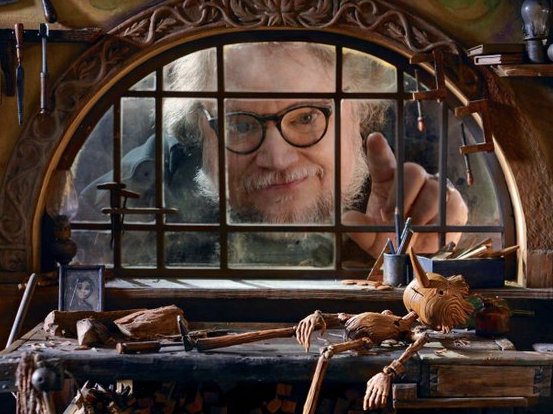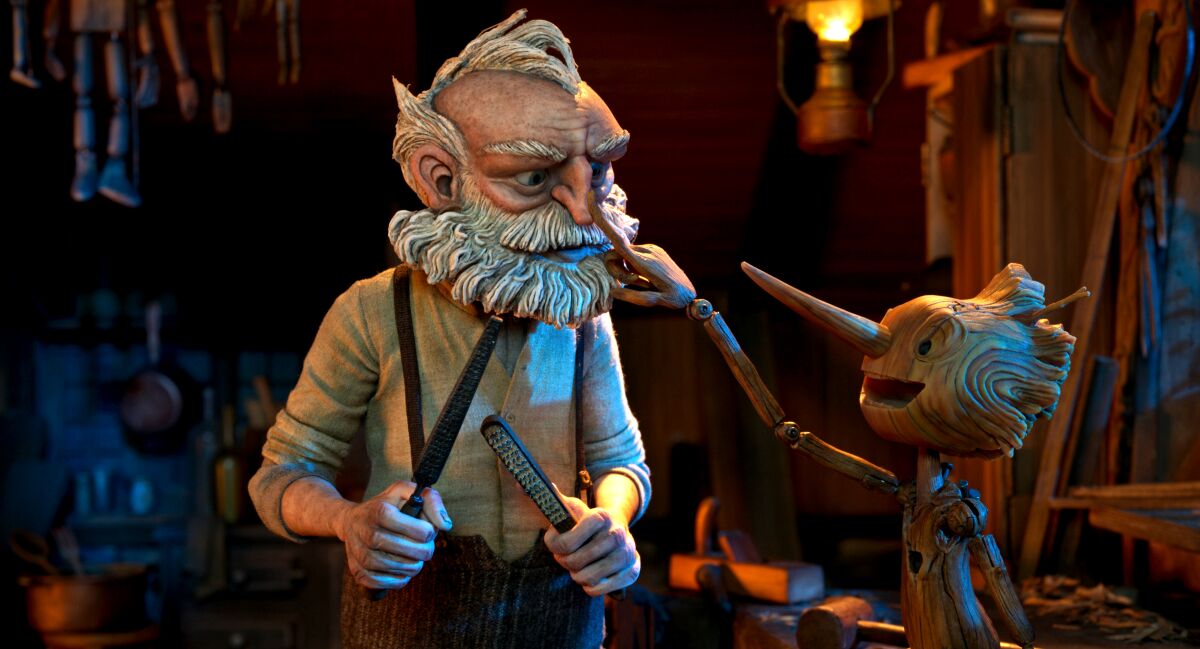AFI Fest: Guillermo Del Toro dazzles with his take on “Pinocchio”
 Monday, November 7, 2022 at 5:16PM
Monday, November 7, 2022 at 5:16PM by Eurocheese

One of the most exciting debuts of the festival was Guillermo Del Toro’s Pinocchio. The first thing that stands out about his adaptation, unsurprisingly, is the stunning visuals. Imagine a puppet show with a lush background where frames are so beautiful, singled out shots could easily serve as postcards. Well known characters such as the cricket (given the name Sebastian here) and the Blue Fairy mix deep blues with the monsters that always seem to lurk in Del Toro’s imagination. Think of it this way: If you crossed the animals from Isle of Dogs with the radiance of a stained-glass window, you’d get images like this.
Del Toro came to present the film and spoke to having total control over the project, not allowing studio notes to mess with his vision (he used stronger language than "mess with")...
He also stressed that animation is not only for children, reflected in some of the darker themes explored by the film. The audience sees Geppetto lose his only son tragically in an act of war, then fall into despair. The spirits of the forest (another set of dreamlike images) take pity on him, and after he drunkenly assembles a wooden image of his son, they bring him to life.

This Pinocchio is a joyful tangle of wooden limbs, a ball of energy dying to explore everything in his path. His momentum helps drive the film, which has some statements to make on the importance of death (and life), prioritizing what matters most, and the nature of war. Along the way, the story collides with a conniving puppeteer, his scheming servant monkey and a bloated giant fish that joins the ranks of Del Toro’s memorable monsters. There’s also a timely look at fascism, complete with a humorous take on Mussolini, but the focus is on the friendships Pinocchio builds as he begins to learn why he can’t simply stumble through life embracing every new experience.
While the story moves well and hits poignantly in a few spots, it’s the craft that takes everything to another level. The songs are used just enough, avoiding becoming too heavy, with “Ciao Papa” being a standout. The music throughout is lovely, and the overall experience is like walking into a storybook. This creation is bound to charm, whether on the big screen or at home. B+
P.S. Since this is my last review of the AFI Fest, a few thoughts: Chris was dead on in his write ups for Women Talking and The Son, my respective favorite and least favorite viewings at the festival; The Fabelmans was a wonderful treat, and it was so exciting to see Steven Spielberg, John Williams and the cast in attendance; and as a big fan of this festival, I am pleased to see audiences start to come back, and hope they will bring back the full experience (missing the parties!) in years to come.



Reader Comments (2)
Sorry but after The shape of a mainstream remake of Pan's Labyrinth and Boring Alley this time I won't buy it
I do hope to see this as I love Guillermo. I hope it's better than that awful remake by Robert Zemeckis. Zemeckis I think is at a crossroads right now. He either needs to ditch the visual effects and stories based on real-life stories to make a good movie or he should just retire.